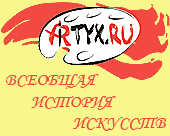передняя азия
древний египет
средиземноморье
древняя греция
эллинизм
древний рим
сев. причерноморье
древнее закавказье
древний иран
средняя азия
древняя индия
древний китай
НОВОСТИ ЭНЦИКЛОПЕДИЯ БИБЛИОТЕКА
Summary
Stasys Krasauskas (1929-1977), gifted graphic artist, is best known for his engravings (book designs and illustrations, and printed sheets) both in his native Lithuania and in the other constituent Soviet Republics. He took part in many exhibitions of Soviet art held abroad and won prizes at several competitions of graphic artists. In 1976 he was awarded the State Prize of the USSR. Krasauskas acquired proficiency learning from the artists of the older generations: Vytautas Jurkunas, Antanas Kucas, Jonas Kuzminskis, Mecislovas Bulaka, and also from the anonymous folk craftsmen who worked in wood.
As a book designer and illustrator, Krasauskas was strongly oriented to poetry, and his work is associated with that of many distinguished poets - Eduardas Miezelaitis, Justas Marcinkevicius, Algymantas Baltakis, Antanas Venclova, and Robert Rozhdestvensky. He strove to bring out their distinctive styles, upholding at the same time the national traditions and the humanistic ideals of our time.
Krasauskas preferred to deal with momentous subjects - life and death, love and sacrifice for the sake of love (be it mother love or love of one's homeland and the, planet Earth). He never downgraded these subjects with a surfeit of details. Every Krasauskas sheet aspires to be graphic embodiment of one or another philosophic idea.
Krasauskas' philosophic bent assumed now a dramatic, now an idyllic aspect, and this was due to his original perception of the world. He had compassion for all of mankind; he longed for ideal harmony between man and nature, for harmony between all individuals and also for the inner harmony of every human being. Krasauskas' basic idiom was the plastic form of man's body. He was able to convey abstract ideas through his representations of man - a feature that stems from the underlying tradition of European art, which, in turn, traces its origins back to classical antiquity. Krasauskas' metaphoric thinking is embodied in his works. They stand out for the musical, rhythmic treatment of the artistic form. He achieved this taking recourse to very austere means of expressions: the plastic quality of black and white to create the artistic image, the dramatic collision of the two colours and their lability.
The metaphor on the jacket of Blood and Ashes (a long poem by Marcinkevicius) is easily decipherable: the red stain on the black background is heart-shaped. One of the illustrations for Joninas' book Man's Heart, Soldier's Heart shows a man with his heart exposed to view; the heart resembles the knotted branches of a powerful tree. The compositions which are free of this symbol still make one aware of the heart - the noble heart of their author.
Imitative art, being a synthesized field of endeavour, encompassed all of Krasauskas' diverse abilities and the entire wealth of his own experience. Athlete, singer, film actor, artist, serious philosophizer, he found the optimum medium of self-expression in graphic art. As we look at his engravings and drawings, we realize that he put into them all his heart.
|
ПОИСК:
|
При копировании материалов проекта обязательно ставить ссылку:
http://artyx.ru/ 'ARTYX.RU: История искусств'
